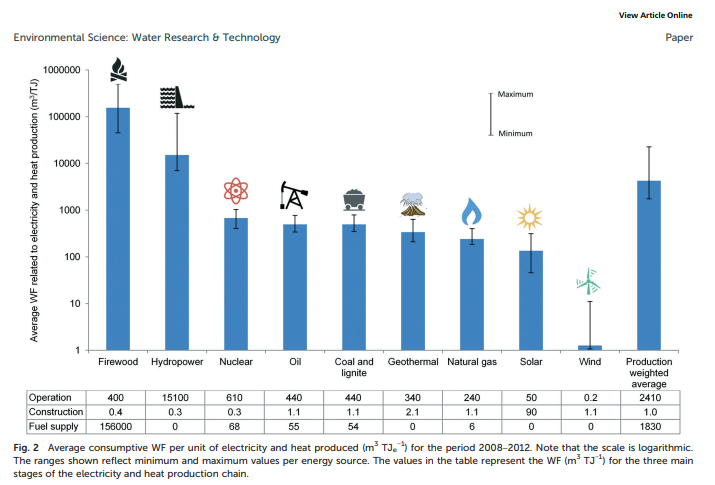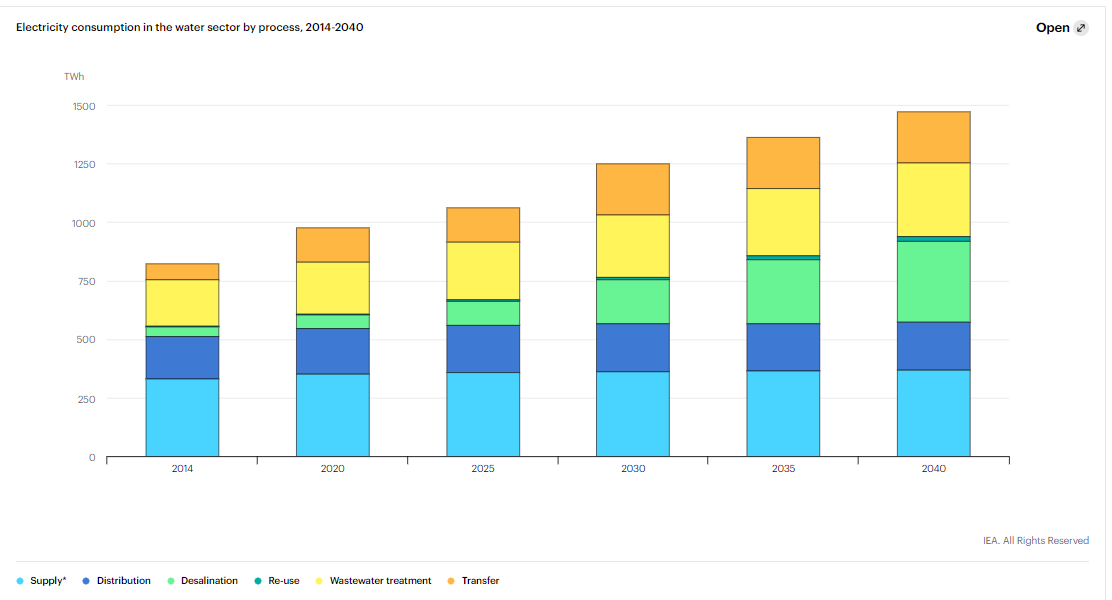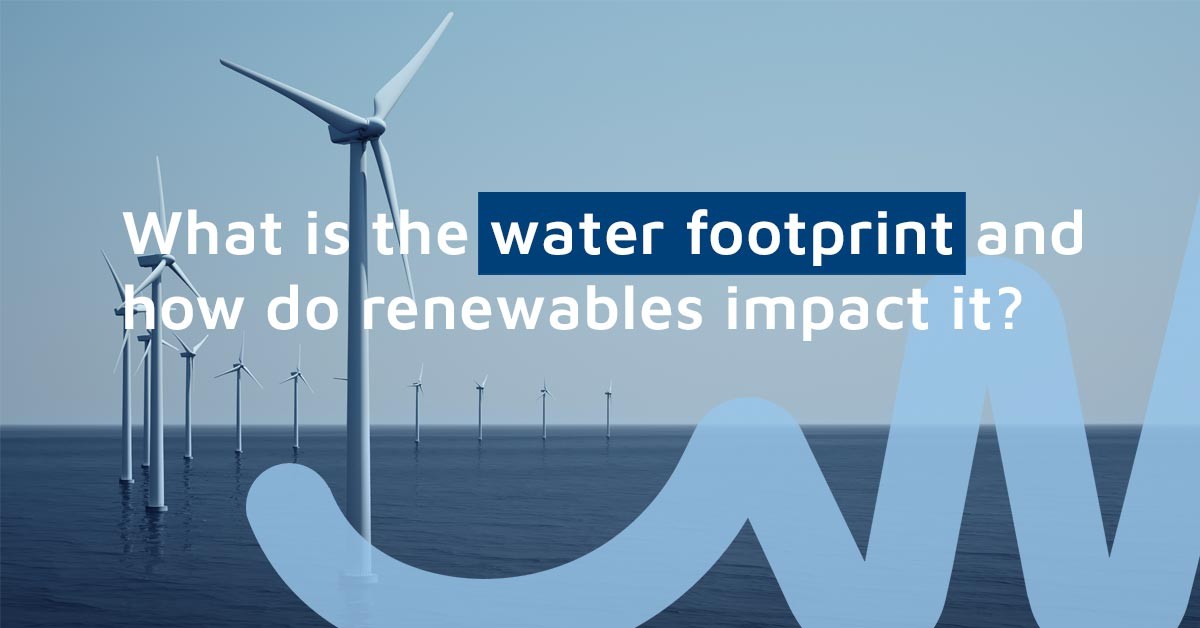What is the water footprint and how do renewables impact it?
Maybe you've heard of the water footprint, which is the water used to grow your food and produce your clothes and the things you buy. This term is directly related to sustainability and is growing increasingly more popular. We'll take a deep dive into the concept and its direct relationship with energy production in this post.
What do we mean by water footprint?
Water footprint measures the volume of water directly and indirectly used to produce goods and services. It also serves as an indicator in the pursuit of more efficient water management.
Arjen Hoekstra, professor at UNESCO-IHE, was the first person to introduce the water footprint concept in 2002. A few years later, he founded the Water Footprint Network to promote the smart and fair use of water. The concept that was coined over 20 years ago is today a key factor in sustainability.
Types of water footprint
The impact on water consumption depends on its origin and use. Accordingly, there are three different types of water footprint:
• Blue water footprint is the volume of water sourced from surface or groundwater resources (rivers, lakes, reservoirs and aquifers) that is required to produce a good or service and is not returned to the environment. This includes water used for irrigation, for example.
• Green water footprint is water from precipitation that is stored in the root zone of the soil and evaporated, transpired or incorporated by plants.
• Grey water footprint is an indicator of the volume of water polluted by the production of goods and services and which requires treatment for its subsequent discharge.
There are three variables in the direct and indirect use of water that need to be taken into account when calculating the water footprint of a product or service.
What impact does the energy sector have on the water footprint?
Traditionally, when it comes to assessing the best sources of energy production for the planet, the focus has been more on the carbon footprint. However, does measuring just a part of the impact provide a realistic picture?
Analysing this indicator alone falls short of what is needed to make forward-looking decisions, since it is also helpful to study the water footprint of both traditional and renewable energy sources.
Energy and water, two scarce resources, are heavily interdependent. Energy supply depends on water. Water supply depends on energy. The bad news is that demand for both resources is set to intensify in the coming years, making optimising their use more critical than ever.
Water is used in energy production to cool reactors, for aquatic biofuel plants, and is also lost through evaporation at hydroelectric power plants.
How is the water footprint of energy production calculated?
To calculate this figure, we need to look at the estimated total water used (m3) in the production of one unit of energy (terajoule or TJ).
Leading the list of technologies that use the most water are first-generation biofuels and hydroelectric plants, both of which fall into the group of renewables.

Chart from the study called The consumptive water footprint of electricity and heat: a global assessment by the Water Footprint Network.
The water footprint of biomass ranges significantly from one country to another and also depends on the type of resource used to produce energy.
Fossil fuel and nuclear power plants, on the other hand, have a much lower consumption than the first block.
However, solar photovoltaic and wind power are clearly the energy sources that consume the least amount of water. It is important to draw a distinction with solar thermal energy, which requires water to cool reactors.
We mentioned total amounts, but the ranking might change slightly if the criteria are based on one type of water footprint or another. You can read more in this 2015 Water Footprint Network study.
What about the impact of electricity use to provide domestic drinking water?
Below, you can see the energy consumed in global terms and the consumption estimate for domestic drinking water, according to a study by the IEA (2007).

Economic and population growth, as well as climate change, are the main factors driving up energy costs to meet potable water demands. Energy is involved in every step of the process: supply, distribution, desalination, recycling, wastewater treatment and transfer.
Let's draw some conclusions...
• Water and electricity must be used responsibly and efficiently. The EU is already assessing the impact of the water footprint on both the EU region and on the regions from which it sources its energy imports. Reducing it is one of its objectives, so we will see measures in this regard in the short and medium term.
• Desalination will increase. The chart above clearly demonstrates this. While the energy used to desalinate seawater represented a minimal percentage in 2014, it will require a considerable amount of energy by 2035.
• The most water-stressed countries should be the first to take action. To keep from abusing the resource, planning for new, more efficient renewable plants that use less water is vital.
Have a suggestion or comment? Please send us an email at
When you subscribe to the blog, we will send you an e-mail when there are new updates on the site so you wouldn't miss them.

